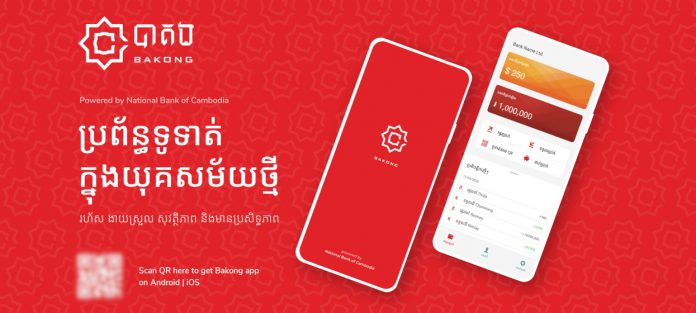Micro, small and medium enterprises (MSMEs) form an integral part of ASEAN economies, but they have not been able to access sufficient financial resources to unlock their growth potential.
The possibility that ASEAN member states may adopt central bank digital currency (CBDC) raises hopes of improving firms’ access to finance in the region. CBDC is a national digital banknote issued and controlled by a country’s central bank. It is different from cryptocurrencies, which are unregulated and decentralised. CBDCs can be used in the same way that national fiat currencies in circulation are used, except that they are entirely in digital form and allow individuals and businesses to hold CBDC accounts directly with the central banks. As of June 2022, eight out of ten ASEAN member states – namely, Cambodia, Indonesia, Laos, Malaysia, the Philippines, Singapore, Thailand, and Vietnam – have conducted research on CBDC, launched pilot projects, or even started to introduce CBDCs.
Micro, small and medium enterprises (MSMEs) form an integral part of ASEAN economies, but they have not been able to access sufficient financial resources to unlock their growth potential. Region-wide, MSMEs account for an average 98.0 per cent of total enterprises and 66.2 per cent of the workforce. However, limited access to bank loans, already a chronic problem for MSMEs, has intensified in some ASEAN member states during the pandemic.
MSME access to commercial loans varies across countries but generally remains low, with a few countries recently experiencing a downward trend – and a steeper drop in 2020 in the wake of the pandemic. The share of MSMEs’ bank loans in total bank loans fell from 30.9 per cent in 2015 to 19.8 per cent in 2019 and 17.1 per cent in 2020 in Laos. The Philippines registered 7.9 per cent (2015), 6.1 per cent (2019) and 5.1 per cent (2020); Thailand contemporaneously saw a more significant drop, from 33.5 per cent to 30.9 per cent and 22.4 per cent.
MSMEs’ ability to secure bank loans is constrained by the high collateral requirements to secure loans. They also generally lack the business transaction records needed to assess performance and potential. The traditional assets used as collateral are land, buildings or machinery, which micro and small enterprises especially struggle to acquire. Newly established MSMEs also face difficulty obtaining start-up loans to expand.
The rollout of CBDC in ASEAN should improve MSMEs’ access to finance in two ways. First, it should enhance the business performance of MSMEs with an online presence by increasing the number of digital consumers. The implementation of CBDC, by gradually substituting the national physical banknote and expanding digital payment systems, will allow unbanked populations in poor or remote regions to buy, sell, save, and invest more easily than before. This could lead to the expansion of ASEAN markets, as an analysis of the World Bank’s data on account ownership shows that more than half of the population aged 15 and above in Cambodia, Myanmar, Laos, Vietnam, and the Philippines do not have an account at a financial institution or with a mobile-money-service provider.
New money lending models based on digital data are emerging in ASEAN economies. CBDCs potentially provide a more comprehensive database of business transactions that can be tapped to provide financing to under-served MSMEs.
For example, Cambodia’s CBDC – called Bakong – reached about half of its population within a year of its launch in October 2020. Users do not need a bank account to register for Bakong, but they need a smartphone with a Cambodian mobile phone number to transmit funds. Greater numbers of digital consumers and larger digital payment systems should incentivise MSMEs to participate in e-commerce and raise their revenues, which will boost the prospects of MSMEs obtaining bank loans.
Second, data on digital business transactions – partially supported by the use of CBDC for online payment – can be used to assess the credit risk of MSMEs for bank loans. Usually, commercial banks cannot access reliable financial statements of MSMEs as the business owners do not pay much attention to the financial records due to their limited knowledge of accounting. This situation changes when MSMEs shift from cash-based business transactions to online ones. All digital transactions are recorded and can be used as an alternative source of data to develop credit risk models that reflect the financial capacity and business prospects of MSMEs.
New money lending models based on digital data are emerging in ASEAN economies. In Indonesia, for example, Grab extends loans to MSMEs using data on their business earnings made via the Grab app and customer reviews to determine the credit risk of its borrowers. Lazada uses its transaction database to evaluate MSMEs’ eligibility for e-commerce financing. CBDCs potentially provide a more comprehensive database of business transactions that can be tapped to provide financing to under-served MSMEs.
However, the increased adoption of CBDC by businesses and consumers raises the risk of cybercrimes. E-commerce firms usually store customers’ credit card information, email addresses, mailing addresses, and usernames and passwords. In ASEAN, one of the key cyberthreats to online shoppers is e-commerce data interception, which obstructs consumer data transmission to and from their devices and remotely alters messages. This reduces consumer confidence in the security of online payments as cybercriminals may use online data to steal credit card information or personal data on CBDC. To mitigate this risk, ASEAN governments need to strengthen data safeguards.
The implementation of CBDC in ASEAN economies should improve MSMEs’ access to finance through better business performance and better information for assessing credit risk. Realising the potential benefits requires ASEAN governments to invest more in the digital infrastructure, especially cellular network coverage, digital ID systems and cybersecurity, while raising awareness and trust of businesses and consumers in CBDCs. BY SITHANONXAY SUVANNAPHAKDY/ FULCRUM




